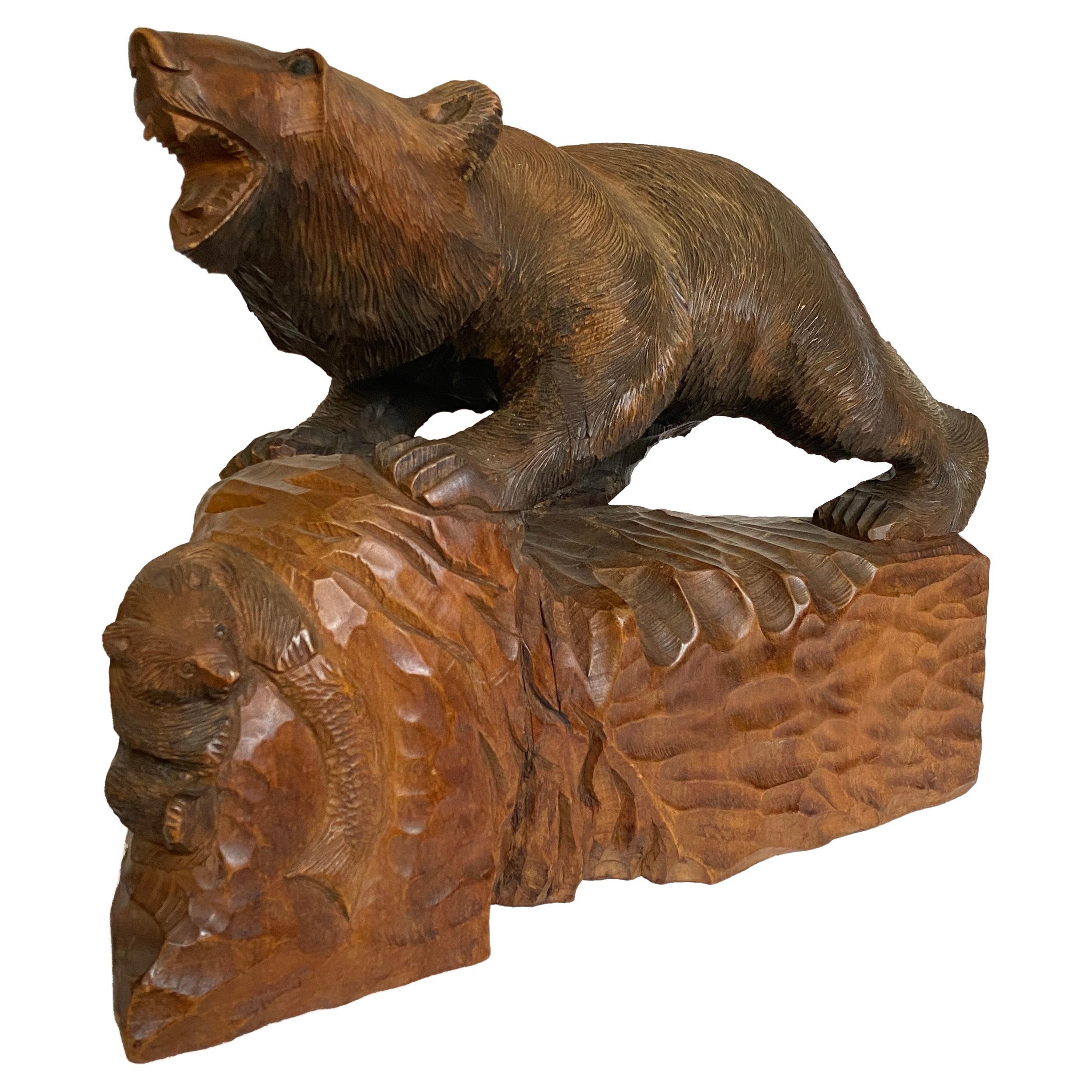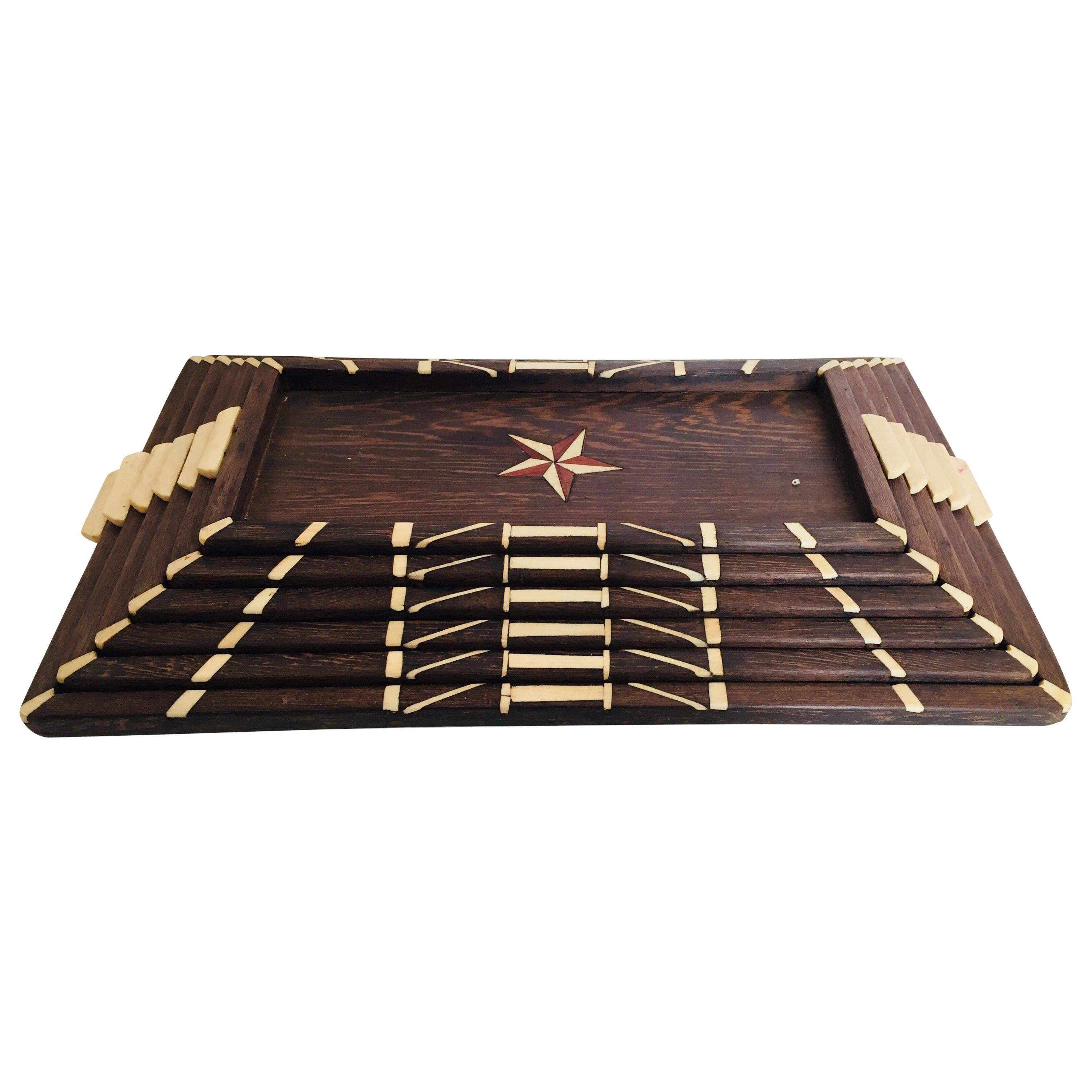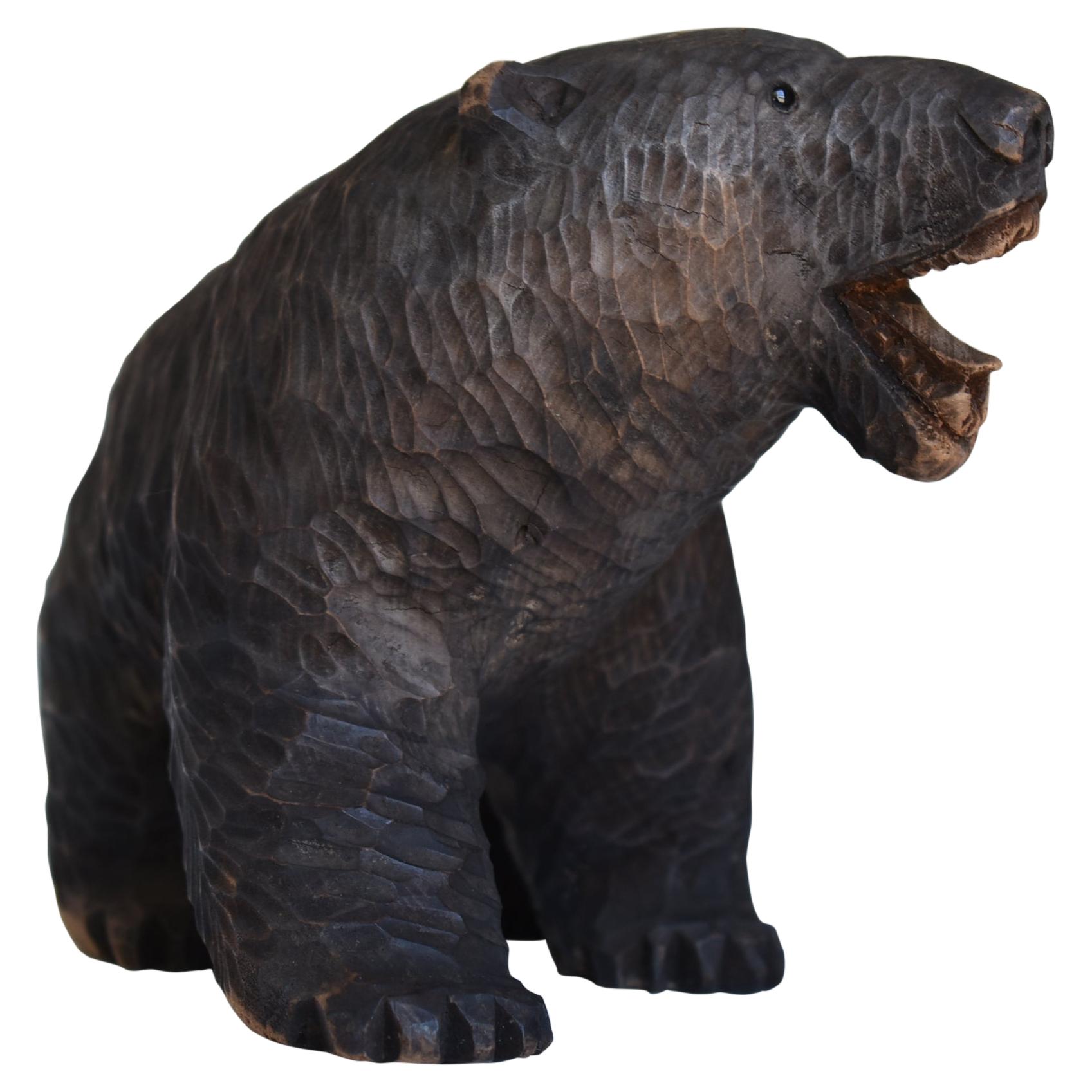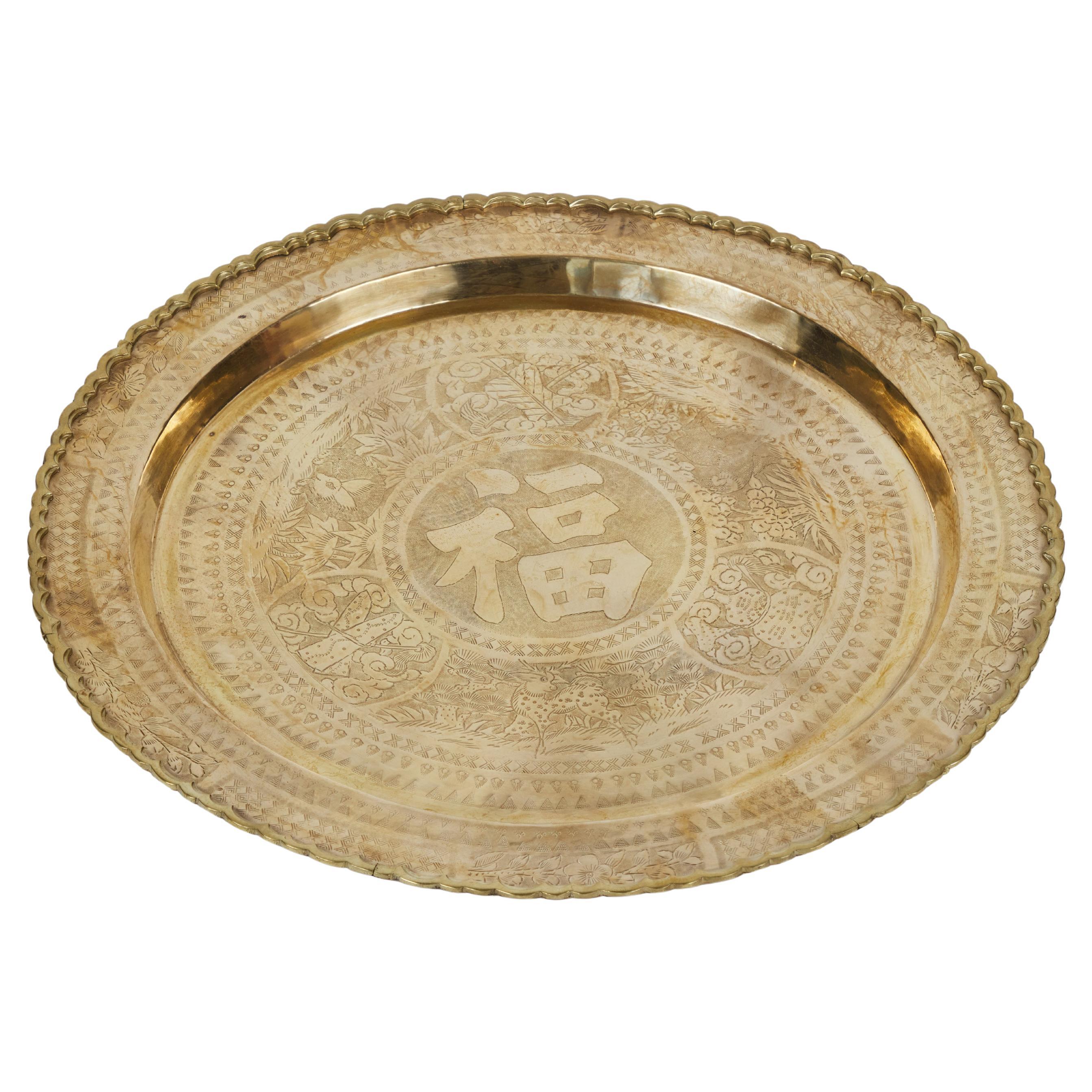Items Similar to Old Tray Made of Japanese Pine Wood / 1930-1960 / Showa Period
Want more images or videos?
Request additional images or videos from the seller
1 of 17
Old Tray Made of Japanese Pine Wood / 1930-1960 / Showa Period
About the Item
This tray is made of pine wood with beautiful grain.
In Japan, many round and square wooden trays have been made since ancient times.
They come in various sizes and materials.
Among them, pine wood is relatively used.
Pine contains a lot of oil, and as it is used, it becomes glossy and turns amber.
And among them, the pine that contains a lot of oil is called "koe-matsu".
"Himatsu" refers to the part of the center of a pine tree that is hundreds of years old and contains plenty of pine resin.
And this tray is the "koe-matsu".
The wood grain is beautiful and has a very beautiful luster.
It also contains a lot of oil, so it weighs 1.1kg.
The round photo is simple and open, but it is a wonderful tray that makes the most of Matsuno's powerful wood grain.
A special wooden box is also included.
On the table, it is written as a round tray made of pine.
This Obon has an author. The author's name is Heian Heiichi.
The author's name is written on the back of the box lid.
Heian is the name of many writers in Kyoto.
Perhaps this part was also made in Kyoto.
Since it is a tray, the wood is slightly warped.
But you can use it without any problem.
It is a recommended item.
Weight: 1.1kg
Size: Diameter 36.5 to 37.3 cm Height 4.4 cm
Best regards
Kengo.
About the Seller
5.0
Platinum Seller
These expertly vetted sellers are 1stDibs' most experienced sellers and are rated highest by our customers.
Established in 2015
1stDibs seller since 2020
1,106 sales on 1stDibs
Typical response time: 4 hours
- ShippingRetrieving quote...Ships From: senzoku, Japan
- Return PolicyA return for this item may be initiated within 7 days of delivery.
More From This SellerView All
- Japanese Old Wood Carving Bear 1930s-1950s/Vintage Figurine Sculpture Folk ArtLocated in Sammu-shi, ChibaIt is a wooden folk craft in the shape of a bear. Mainly manufactured in Hokkaido. It is a wood carving made from 1930 to 1950. The eyes are made of glass. This type is rare in Japa...Category
Late 20th Century Japanese Showa Sculptures and Carvings
MaterialsWood
- Dustpan-Shaped Japanese Old Flower Vase Made of Bamboo/Wall Hanging ObjectLocated in Sammu-shi, ChibaThis is a bamboo object made in Japan from the Taisho era to the mid-Showa period (1912-1950). It is made in a Japanese dustpan type and has a unique shape. You can hang it on the ...Category
Early 20th Century Japanese Showa Decorative Art
MaterialsBamboo
- Japanese Old Copper Drop Object 1940s-1960s / Figurine Wabi SabiLocated in Sammu-shi, ChibaThis object is a stack of old Japanese copper drops. Item dates from the mid-Showa period (1940s-1960s). This type of object sometimes occurs when copper drops naturally accumulate and harden during the casting process at copper refineries. 'Accidental beauty...Category
Vintage 1940s Japanese Showa Metalwork
MaterialsCopper
- Japanese Small Wooden Box with Beautiful Wood Grain Made of MulberryLocated in Sammu-shi, ChibaThis is a small storage box for storing old Japanese tea utensils. It is called [kikyoku] in Japanese. This wooden box comes in a variety of mate...Category
Early 20th Century Japanese Taisho Furniture
MaterialsOther
- Old Japanese Scholar's Stone / Beautiful Appreciation Stone/Natural StoneLocated in Sammu-shi, ChibaThis is a stone mined in Japan. Measure: w 22cm. Not only in China but also in Japan from ancient times, rocks in the mountains have been shaved and stones for viewing have been qua...Category
Early 20th Century Japanese Showa Scholar's Objects
MaterialsStone
- Old Japanese Decagonal White Glaze Bowl / 1926-1970 / Coffee CupLocated in Sammu-shi, ChibaA bowl with a beautiful white glaze. Probably made in the Showa period (1926-1970). The decagonal shape gives a tighter impression than the circular shape. It is nice to use it ...Category
20th Century Japanese Showa Pottery
MaterialsPottery
You May Also Like
- Carved Wood Ainu Bear with Baby and Fish, Hokkaido, Japan, Keyaki, Showa PeriodLocated in Point Richmond, CAAinu Bear with baby and fish, Hokkaido, Japan, Keyaki, Showa period. Hewn from one solid piece of Keyaki wood, this bear flashes a ferocious expression or...Category
20th Century Japanese Showa Sculptures and Carvings
MaterialsWood
- Antique Anglo-Indian set of Six Staking Wood Trays with Bone InlaysLocated in North Hollywood, CASet of six antique Anglo-Indian trays that fit into a stack. The wood is likely rosewood with attractive grains and the trays are inlaid with a star in the center consisting of bon...Category
Early 20th Century Indian Anglo-Indian Serving Pieces
MaterialsWood
- Vintage Asian Round Brass TrayLocated in Pasadena, CABrilliant vintage Asian round brass serving tray is decorated with intricate hand etched detailed floral, patterned and calligraphic designs. It has an ornamental 3 dimensional attac...Category
20th Century Serving Pieces
MaterialsBrass
- Japanese Edo Period Carved Wood Mask of Old Man Ko-JoLocated in New York, NYJapanese Edo period carved wood mask depicting Ko-Jo, an old man. The piece dates to circa 1820 and is in great condition. 15 inches long with t...Category
Antique 1820s Japanese Edo Sculptures and Carvings
MaterialsWood
- Japan 1890 Meiji Period Ebisu Sculpture in Wood Carving of an Old FishermanLocated in Miami, FLAn extremely well detailed wood carving of Ebisu, as a fisherman. Beautiful and well detailed sculpture, created in Japan during the Meiji dynastic period (1868-1912) back in the 1890's. This piece represent the god of good fortune Ebisu. Was exceptionally carved and executed from one solid single piece of rose wood, showing a gorgeous face expression, with intricate details in the hands and feets, he's carrying as usual a rod and a fish. Ebisu (yebisu), ???, god of fortune, the ocean and fisherman. In the japanese mythology is one of the seven gods of luck, sichi-fuku-jin, the patron of the fisherman and tradesmen. he is depicted as a bearded, smiling fisherman with formal long court ropes, often carrying a rod in one hand and a tai, symbolic fish of the good luck, in the other. The height is 14.25 inches (36.20 cm) and the base measurements is 6.5 by 6.45 inches (16.5 x 16.38 cm). Meiji period, is an era of Japanese history that extended from October 23, 1868 to July 30, 1912.The Meiji era was the first half of the Empire of Japan, when the Japanese people moved from being an isolated feudal society at risk of colonization by Western powers to the new paradigm of a modern, industrialized nation state and emergent great power, influenced by Western scientific, technological, philosophical, political, legal, and aesthetic ideas. As a result of such wholesale adoption of radically different ideas, the changes to Japan were profound, and affected its social structure, internal politics, economy, military, and foreign...Category
Antique 1890s Japanese Meiji Sculptures and Carvings
MaterialsWood
- Andrianna Shamaris Large Wood and Coconut Shell Antique LadleBy Andrianna ShamarisLocated in New York, NYA unique wooden ladle with a half coconut shell attached, originally used for serving soup. We added the shell inlay to the long wooden handles. Perfect p...Category
Early 20th Century Tribal Serving Pieces
MaterialsWood, Reclaimed Wood, Shell, Coconut
Recently Viewed
View AllMore Ways To Browse
Round Photo
Old Retro Items
Woodworking Old
1930 Kitchen Table
Old Wooden Box
Old Japanese Table
Open Wood Tray
Silver Boxes Trays
Lidded Silver Tray
Mid Century Wood Serving Tray
Round Tray Wood
Retro Wooden Tray
Silver Tray With A Lid
Best Japanese Ceramics
Round Wooden Boxes
Old Vintage Wooden Table
Old Vintage Wooden Tables
Silver Tree Table





